
A classic, home-cooked side dish for more than 100 years, Japanese Potato Salad is distinct for its colorful addition of fresh vegetables, creamy texture, and rounded flavor. It‘s the ultimate crowd-pleaser!
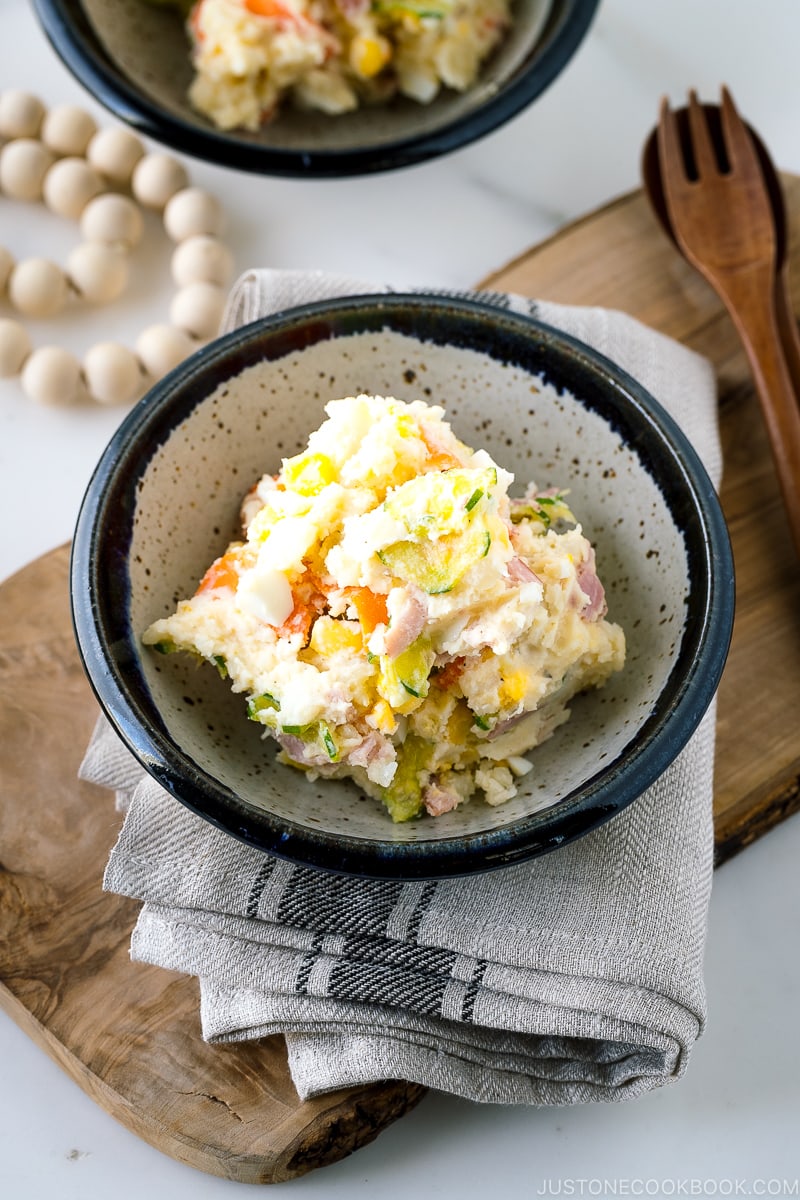
Summer cookouts and holiday get-togethers are where potato salads typically shine, but this recipe for Japanese Potato Salad (ポテトサラダ) is one that I enjoy making year-round. In Japan, it shows up in bento boxes, convenience stores, and even as a bar snack at izakaya.
Today, let‘s learn how to make this classic Japanese potato salad that all ages will love.
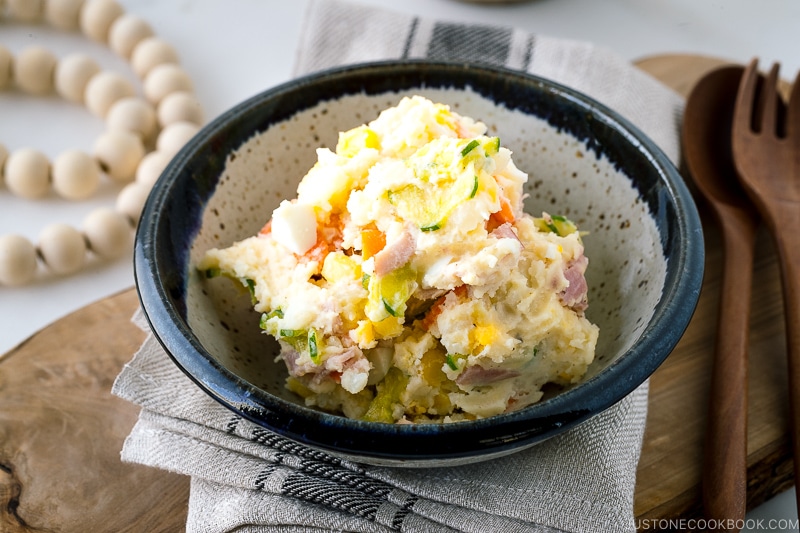
What is Japanese Potato Salad?
Much like potato salads in the US, Japanese potato salad is a popular party dish and it’s been a popular dish in Japan for over 120 years. It has the perfect balance of rich, tart flavors with a touch of sweetness and a pleasant variety of textures.
As with many other yoshoku dishes (like Curry Rice, Croquettes, and Tonkatsu), potato salad likely made its first appearance during the Meiji Era (1868-1912). After a Japanese chef tried to recreate the popular Eastern European Olivier Salad (also known as Russian Salad), this Japanese version quickly gained popularity.
What Makes It Different from Other Potato Salads?
German and American potato salad recipes are often vinegar-based with chunks of waxy potatoes and ingredients like mustard, bacon, and fresh parsley or chives. But in the Japanese version, you will find a variety of colorful ingredients like carrots, corn, hard-boiled eggs, cucumber, and ham.
The vegetables add sweetness and substance to the salad, and the simplicity of seasonings delivers a balanced flavor. There is less of an acidic base because of the absence of vinegar.
Every family in Japan has their own take on potato salad, and that’s one of the many things I love about it. You can add ingredients of your choice (e.g., onion, peas, string beans, apple, or canned tuna). It will be just as nutritious and eye-catching.
The potatoes are almost completely mashed (but I recommend leaving a few chunks), so the texture is creamy. Most importantly, the key difference in flavor comes from the type of mayonnaise we use (more on this below).
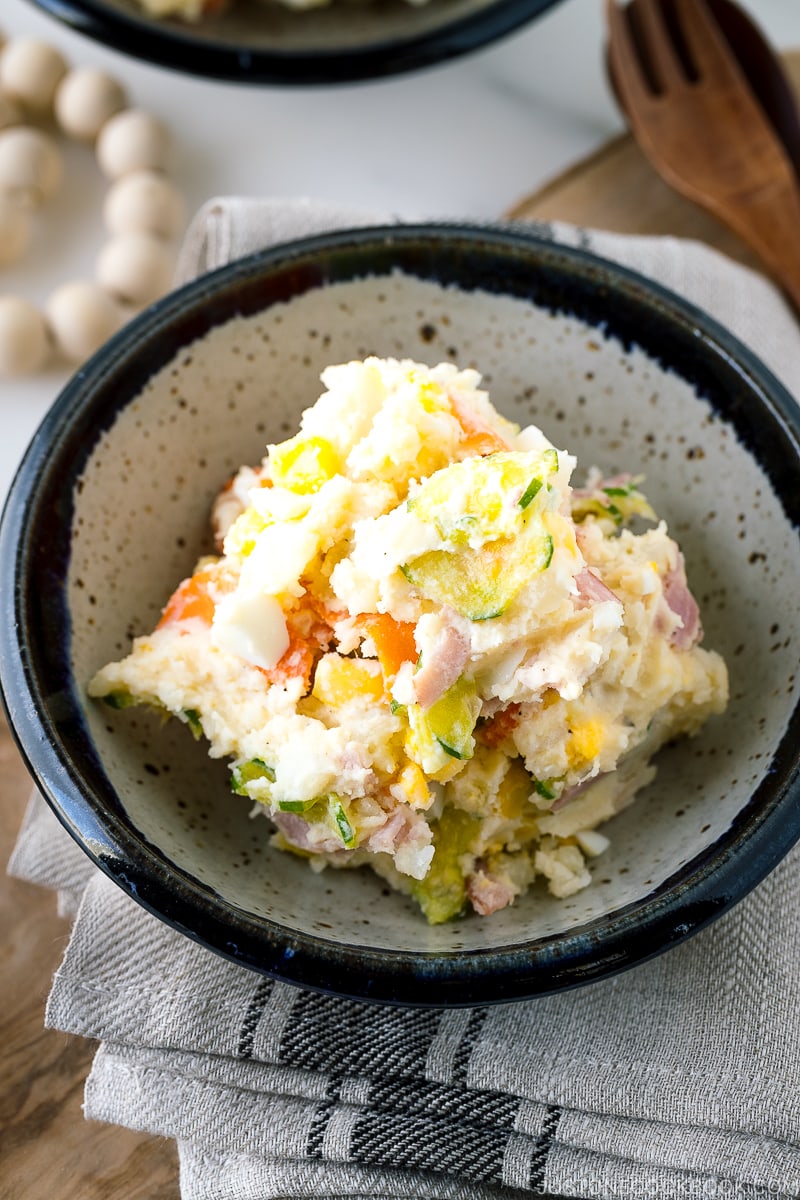
Ingredients for Japanese Potato Salad
You can find most of the ingredients for this potato salad in a regular supermarket. See the recipe card below for the full ingredient list.
- Russet Potatoes – Waxy potatoes are commonly suggested for potato salad, but there is a reason we use a starchier potato for this recipe. Japanese potato salad is creamier in texture than its Western counterpart. While we don’t mash them all the way, the texture of russet potatoes makes it easy to break up while mixing.
- Corn – I love the addition of corn to the potato salad. The tiny kernels are packed with sweetness and embody the flavors of summertime. You can use canned or frozen for easy preparation.
- Carrots – This adds another element of natural sweetness to the salad.
- Cucumber – Mixing thinly sliced cucumber into the salad gives it a refreshing flavor, not to mention a nice crunch!
- Boiled egg – Egg and potatoes are extremely complementary. Plus, the added protein makes it a substantial dish.
- Ham – If you don’t eat meat, simply omit it!
- Seasonings – Kewpie Japanese mayo, rice vinegar, salt, and freshly ground black pepper.
What is Kewpie Mayo?
KEWPIE (キューピー) is the most popular brand of Japanese mayonnaise. To make the potato salad distinctly Japanese, you must use Japanese mayonnaise, which adds a rich and tangy component that you can’t easily substitute.
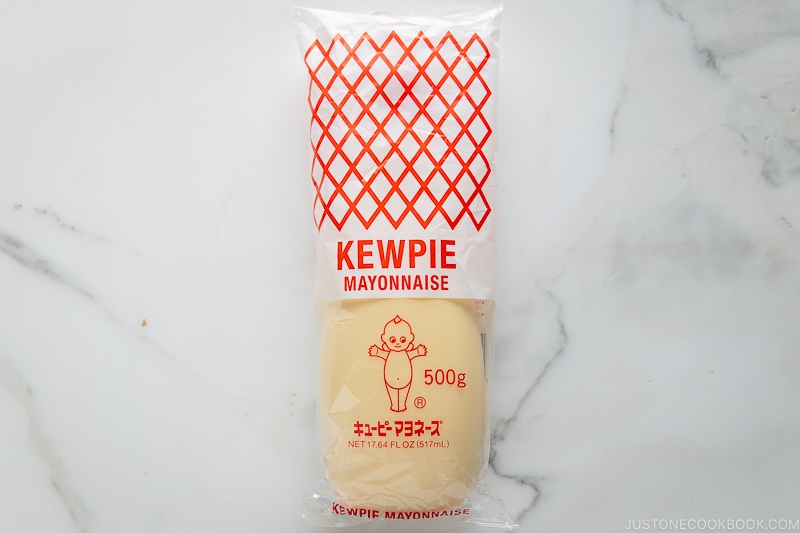
You can find the famous, red-capped squeeze bottle of Kewpie mayo in most Asian grocery stores or on Amazon. Some mainstream grocery stores such as WholeFoods and Target may also carry Keypie mayo now. Make sure you get the imported, Japanese package Kewpie because American packaged one tastes differently from the imported version.
If you have a little bit of time, try this Homemade Japanese Mayonnaise recipe!
How to Make the Best Japanese Potato Salad
Here is a quick overview to make Japanese potato salad.
- Peel, cut, and boil the potatoes until a skewer pierces a potato smoothly, about 15 minutes.
- While cooking the potatoes, prepare the rest of the ingredients.
- Once the potatoes are done, mash the cooked potatoes and season them. Let cool completely.
- When the potatoes are cool, combine them with the other ingredients.
- Season the potato salad with Japanese kewpie mayo. Chill and serve!
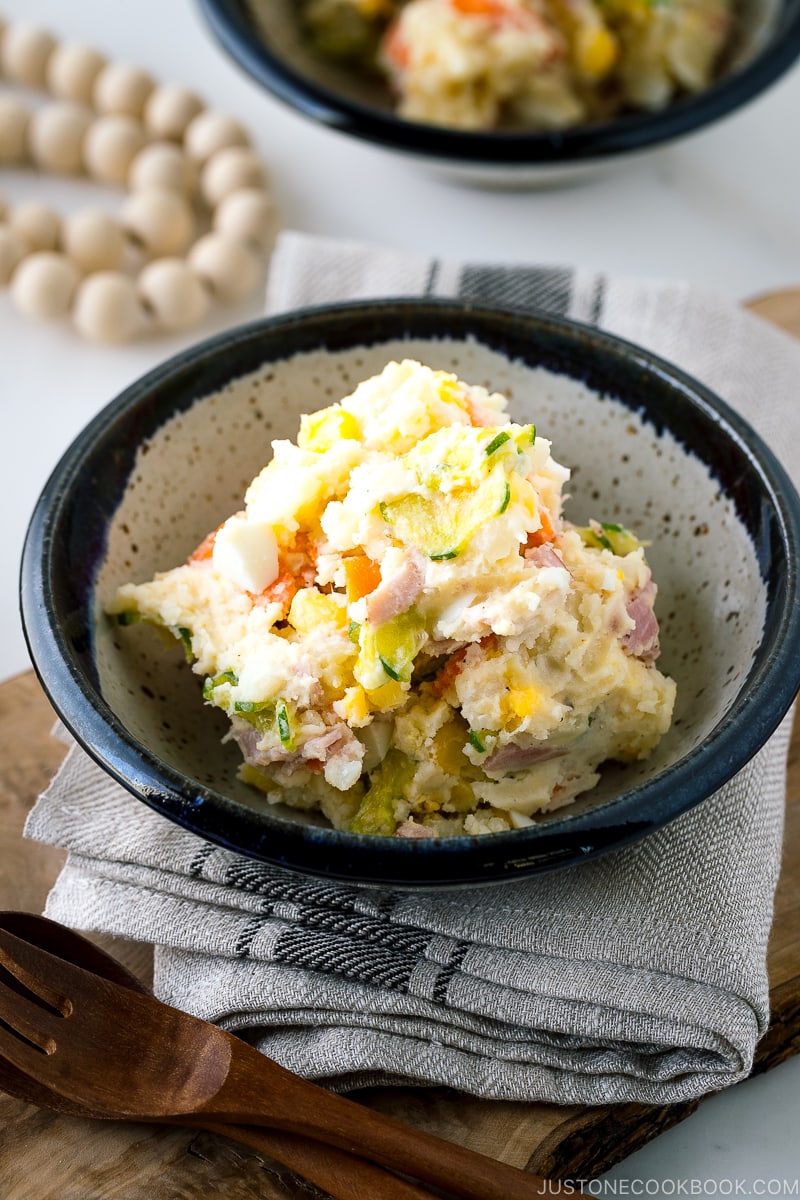
Cooking Tips
It’s a very easy recipe, but to make the best Japanese potatoes, don’t forget to follow these tips!
- Cut ingredients into a bite-sized, uniform shape – Because of the smooth texture of the smashed potatoes, you‘ll want to cut the other ingredients into small pieces so they incorporate well.
- Remove excess moisture from all ingredients – Excess moisture will ruin the texture and flavors of potato salad. So it‘s key to withdraw the moisture from cucumbers and potatoes before mixing them all.
- Add seasonings to hot potatoes – The potatoes will absorb flavors well when they are still warm. So add rice vinegar and pepper, except for the mayonnaise! Read next.
- Let the potatoes cool – Hold on to the mayo. If you mix mayonnaise while the potatoes are hot, the mayonnaise will separate. Therefore, work on the other ingredients while the potatoes cool down. It‘s a good idea to start cooking the potatoes first to give them plenty of cooling time.
- Gradually add mayonnaise – We all want to use less mayonnaise, but it is the main flavor so you just can‘t skimp here. I suggest adding just two-thirds of the mayo first, then taste to see if you want to add the rest. A sprinkle of salt can bring out the flavors you need.
- Chill the potato salad before serving – Not only does it taste better, but chilling also gives time for the flavors to meld together.
How to Store Japanese Potato Salad
You can keep the leftovers in an airtight container and store in the refrigerator for up to 3–4 days or in the freezer for 2–3 months.
What to Serve with Japanese Potato Salad
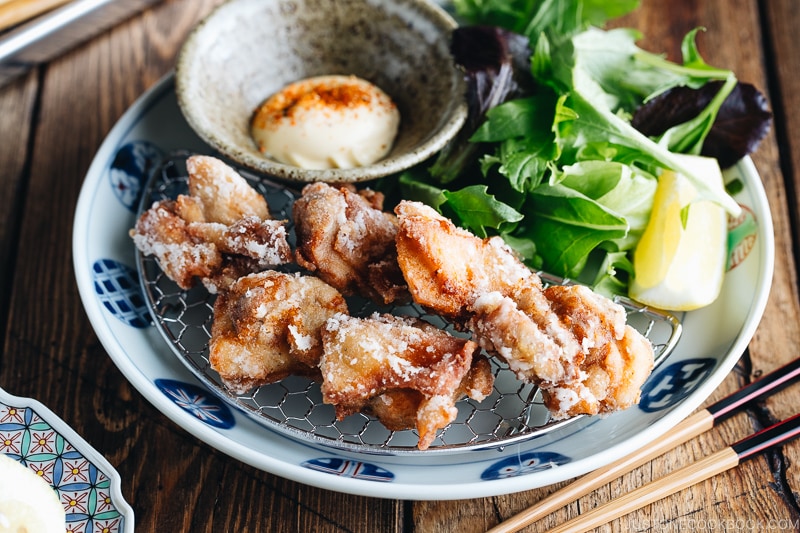
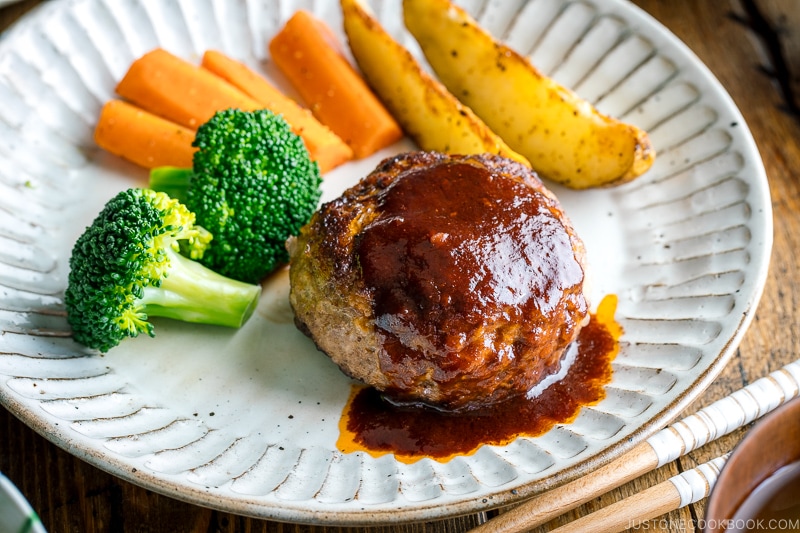
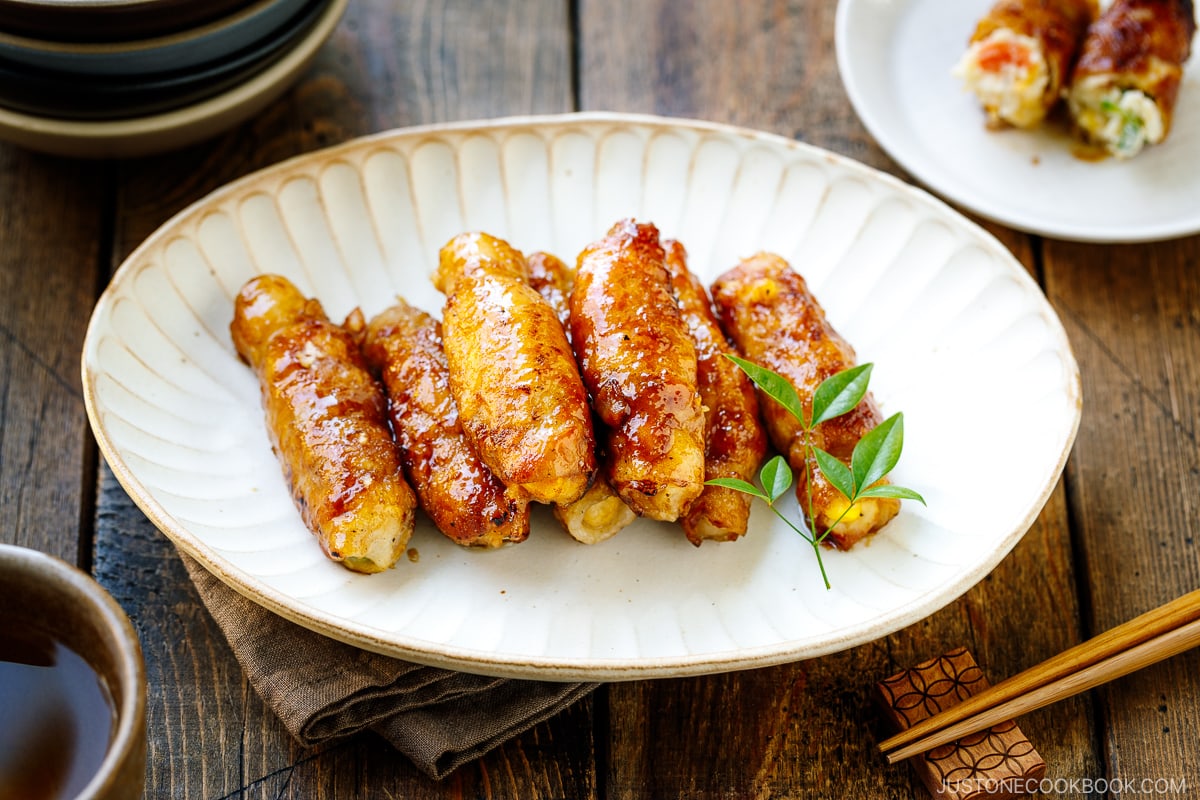
You can‘t beat the versatility of this salad! For that reason, it’s a dish that you can pair with just about anything. Some other ways I like to enjoy Japanese Potato Salad are alongside Karaage (fried chicken) or Hambagu (Japanese hamburger steak).
If you’re having a barbecue or attending a potluck, see my list of Japanese recipes that go perfectly with this potato salad.
We rarely have leftovers of this dish in my house, but when we do, I love making these Potato Salad Pork Rolls.
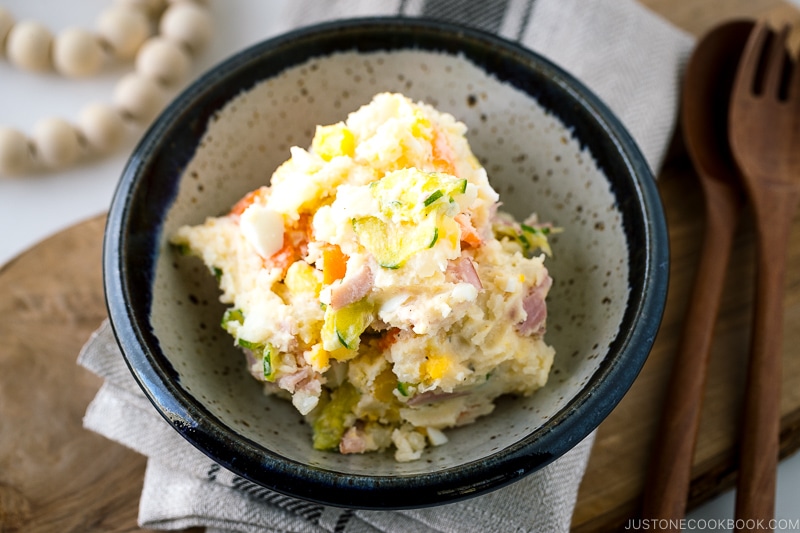
Wish to learn more about Japanese cooking? Sign up for our free newsletter to receive cooking tips & recipe updates! And stay in touch with me on Facebook, Pinterest, YouTube, and Instagram.
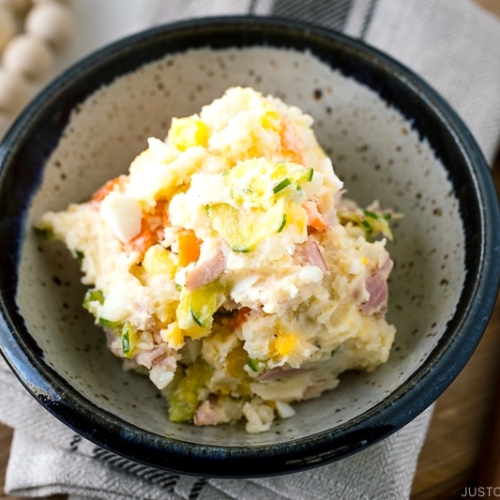
Japanese Potato Salad
A classic, home-cooked side dish for more than 100 years, Japanese Potato Salad is distinct for its colorful addition of fresh vegetables, creamy texture, and rounded flavor. It‘s the ultimate crowd-pleaser!
Ingredients
Prevent your screen from going dark
Instructions
To Prepare the Potatoes
-
Peel 2 russet potatoes and cut them into 1½-inch (3.8-cm) pieces; I usually cut one russet potato into four pieces. They should be roughly the same size so that they’ll cook evenly.
-
Put the potatoes in a medium pot and add cold water to cover by 1 inch (2.5 cm). Add 2 tsp Diamond Crystal kosher salt to the pot and turn on the heat to medium high. Cover with the lid, leaving it slightly ajar to avoid a boil-over. Tip: Start cooking the potatoes in cold water to heat them up slowly so they cook through evenly. While you‘re cooking and cooling the potatoes, prepare the other ingredients (see next section).
-
Once the water is boiling, remove the lid and reduce the heat to medium. Cook on a gentle boil until a skewer pierces a potato smoothly, about 15 minutes.
-
Drain the water completely from the pot using the lid to hold back the potatoes. Put the pot with the potatoes back onto the stove over medium heat to evaporate any remaining water completely, shaking the pot constantly to avoid sticking. When there is no liquid left, remove the pot from the heat.
-
Mash the potatoes lightly, leaving some small chunks for texture. Transfer the potatoes to a large bowl.
-
While the potatoes are hot, add 1 Tbsp rice vinegar (unseasoned) and freshly ground black pepper. Set aside to cool. Why not add mayonnaise here? If you add it while the potatoes are hot, the mayonnaise will separate. Therefore, work on the other ingredients while the potatoes cool down.
To Prepare the Other Ingredients
-
While the potatoes are cooking and cooling, prepare the other ingredients. Bring a small pot of water to a boil for cooking the carrots and corn (next step). Peel and cut 2 inches carrot in half or quarters lengthwise, and then cut crosswise into thin slices. You may use a mandoline slicer to cut it thinly.
-
Once the water is boiling, cook the carrot slices and ¼ cup (40 g) frozen corn for 5 minutes. If you‘re using canned corn, you don‘t need to boil it.
-
Alternatively, you can use the microwave to heat the carrot for a few minutes until a skewer pierces it smoothly; don’t overcook them or they will get mushy. Drain the water in a fine-mesh sieve and set aside to cool.
-
Add 1 large egg (50 g each w/o shell) to the same pot and add enough cold tap water to cover by 1 inch. Turn on the heat to medium and bring to a boil. Once boiling, set a timer for 11–12 minutes and reduce the heat to maintain a gentle simmer. When the timer goes off, shock the egg in cold water until cool.
-
Remove and discard the shell. Slice the boiled egg and chop it into smaller pieces. Set aside.
-
Peel 1 Persian cucumber (leave some skin on to create a striped pattern), and thinly slice it. Tip: If you‘re using a large cucumber, you may need to cut it in half or quarters lengthwise before slicing it.
-
Sprinkle ½ tsp Diamond Crystal kosher salt over the cucumber slices, knead them with your hands, and let them stand until they release their moisture, about 5 minutes. Then, squeeze the cucumber to remove any moisture and set aside. Tip: Salt draws out moisture from the vegetables through osmosis. This process keeps them from releasing moisture into the salad and diluting the flavors.
-
Cut 2 slices Black Forest ham into 1-inch (2.5-cm) thin strips and set aside.
Nutrition
Nutrition Facts
Japanese Potato Salad
Amount per Serving
% Daily Value*
* Percent Daily Values are based on a 2000 calorie diet.
Editor’s Note: This post was originally published on August 31, 2011. It was updated with new images on June 28, 2021, and republished with more helpful information and a new video on April 12, 2024.



![[Real Mukbang Vlog] Kimchi Jjigae 🌱| JjaJangMyeon Mukbang | vegan makeup vlog 🥰](https://reviewer4you.com/wp-content/uploads/2024/05/1715936525_maxresdefault-336x220.jpg)
![[Real Mukbang Vlog] eating instant vegan ramen on the beach 🏖 | Cardate mukbang vlog | Joyoung 🥰](https://reviewer4you.com/wp-content/uploads/2024/05/1715931636_maxresdefault-336x220.jpg)
![[Real Mukbang Vlog] vegan Dunkin Donut 🍩 | Malaysian food car date 🥘 | Korean food mukbang 🍜](https://reviewer4you.com/wp-content/uploads/2024/05/1715926742_maxresdefault-336x220.jpg)